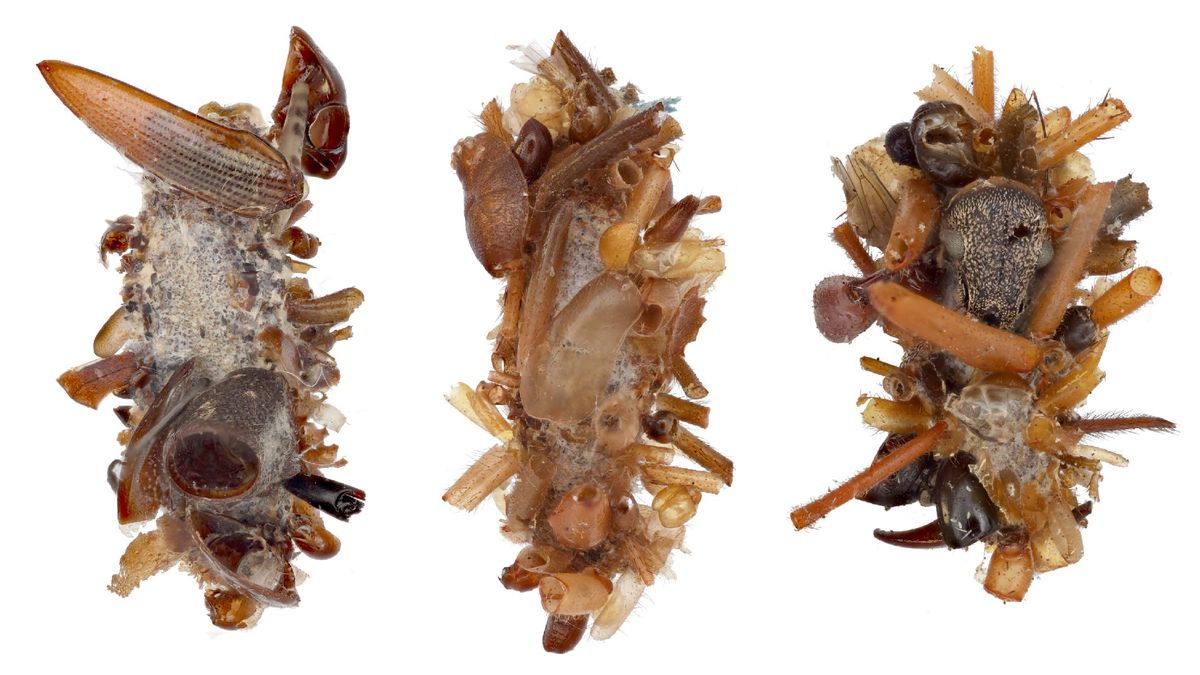Now Reading: Bone-Collecting Caterpillar: A Nightmare in the Wild
-
01
Bone-Collecting Caterpillar: A Nightmare in the Wild
Bone-Collecting Caterpillar: A Nightmare in the Wild

Quick Summary
- Name: Bone Collector Caterpillar
- Habitat: Found exclusively in a 6-square-mile area of the Wai’anae mountain range on Oahu, Hawaii, within cobwebs in logs, tree hollows, or rock cavities.
- Diet: carnivorous; scavenges dead or dying arthropods caught in spider webs, such as flies, weevils, bark beetles, and ants.
- Camouflage Strategy: covers itself with body parts of its prey (e.g., legs, wings) to smell or taste like past meals to avoid being attacked by spiders. This silk casing tactic has kept them safe from predators and earns them their eerie name.
- Genetic Evolution: Part of the genus Hyposmocoma, known for silk-weaving mobile cases. The species likely evolved over six million years ago and migrated from an older Hawaiian island that has since disappeared to reach Oahu.
- Rarity: Extremely rare carnivorous caterpillar species; researchers have identified only 62 specimens over two decades due to their territorial nature and cannibalistic tendencies on competition within cobwebs.
- Carnivorous caterpillars constitute just 0.13% of global moth and butterfly species.
!Bone collector cases
Bone collector cases decorated with insect remains.
!Bone collector caterpillar next to spider
A bone collector caterpillar with a spider.
Indian Opinion Analysis
The finding of the bone collector caterpillar highlights fascinating evolutionary adaptations that emphasize survival through resourceful strategies like camouflage using insect remains-an entirely unique behavior even among carnivorous caterpillars globally.With implications for biodiversity studies everywhere-but notably conservation efforts-rare specimens like this underline how isolated ecosystems lead to highly specialized life forms inhabiting extremely small niches.
For India-an ecologically diverse nation teeming with endemic species across regional biodiversity hotspots-the study draws attention to preserving micro-habitats where niche creatures evolve unique traits thanks to isolation caused by geography or environmental factors akin to Hawaii’s islands.
One practical implication for Indian conservation would involve better documentation under India’s National Biodiversity Authority or similar entities so that discoveries capturing these magnificent but fragile ecological phenomena are globally acknowledged before they risk extinction due solely either mismanagement gaps people – Read more: Source Link























